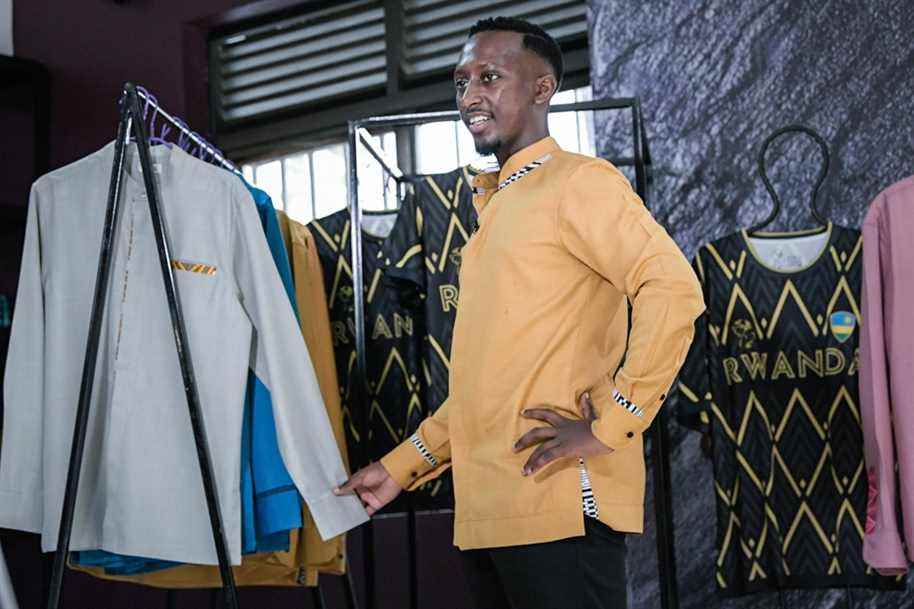(Kigali) In Kigali, we enjoy these little moments of glory, like when in 2018 Junior Nyong’o, actor and brother of Lupita Nyong’o, attended the world premiere of the film Black panther in Los Angeles in a House of Tayo three-piece suit.
The modest website of this high-end male brand, one of the most famous in the Rwandan capital, exploded that day with the influx of connections from all over the world.
“We have changed dimension,” says its founder Matthew Rugamba, a 32-year-old Anglo-Rwandan, still moved by this episode which propelled “the made in Rwanda on the Hollywood red carpet ”.
“For years we have been telling people that our fashion is beautiful […] but sometimes it takes moments like that to get you to the next step. “
A small country of 13 million inhabitants landlocked in the heart of Great Lakes Africa, Rwanda is asserting itself as a stronghold of creation on the continent, with its own fashion week.
Kigali is not yet Lagos, an African temple of fashion, but it appeals to a clientele of wealthy locals, expatriates, members of the diaspora and visiting businessmen.
Neither House of Tayo, nor other flagship brands like Moshions or Sonia Mugabo still existed ten years ago, notes Emmanuel Safari, a regular customer of the first, located in an affluent district of Kigali.
The craze started when local personalities, including President Paul Kagame, wore them. “Then there were social networks, Instagram, YouTube…”, recalls this 45-year-old lawyer, accompanied by a friend who fell in turmoil in front of his shirts.
“Changing the Speech”

PHOTO SIMON MAINA, FRANCE-PRESS AGENCY
Joselyne Umutoniwase, founder of Rwanda Clothing
Kigali style? “It stands out without being flashy,” sums up Jean-Victor Brun, a 50-year-old Haitian-American who came to Rwanda to develop projects in new technologies.
“Modern, ethnic, and rooted in the identity of our country,” adds Joselyne Umutoniwase, founder of Rwanda Clothing.
Like its competitors, this brand not only produces most of its bespoke creations – a popular custom in Africa – but it also incorporates elements of Rwandan cultural heritage.
Here, the geometric shapes of imigongo – a relief painting method using cow dung and natural pigments, often black and white – form an edging on the pockets or necklines.
There, the beading, which notably adorned the headdress of the King of Rwanda, is available on the lapels of the jackets, while the braiding adorns the strap of the sandals, like those of Uzuri K & Y.
Ysolde Shimwe, co-creator of this shoe brand, insists on the desire of young designers to change the image of Rwanda, where the 1994 genocide killed more than 800,000 people, mainly Tutsi.
“Ten years ago, when we typed Rwanda on the internet, we saw only machetes, people killing each other and starving kids in the streets,” recounts this very young thirty-something.
“As designers in Rwanda, we are also helping to change the discourse on Rwanda, to change the way people perceive Rwanda, because we are more than that. “
“Boost”

PHOTO SIMON MAINA, FRANCE-PRESS AGENCY
Ysolde Shimwe, co-founder of the Uzuri K&Y shoe brand
Anxious to develop local production, the government has played an important role in the development of the sector.
Between 2016 and 2017, Rwanda multiplied by more than 10 import taxes on second-hand clothing, imposing a de facto moratorium on this trade. The decision resulted in Kigali being excluded by the United States, the main supplier of these products, from Agoa – a system of customs exemptions for processed African products.
At the same time, Rwanda has allowed designers to import their fabrics without tax, mainly from China, India or West Africa.
“It was a support, a boost for our brand,” says Joselyne Umutoniwase, who sells to “the middle and upper class” – about $ 70 for a shirt, $ 80 for a dress.
The entrepreneur, who employs 45 people, notes however that the challenges persist, pointing in particular to the small size of the local market – more than 80% of the Rwandan population lives in rural areas and the GDP per capita does not exceed 800 dollars according to the Bank. global.
For his part, Uzuri K & Y notes the immense need for training in Rwanda, in particular because of the loss of skills linked to the genocide.
“When we wanted to launch a shoe brand eight years ago, we couldn’t find a qualified workforce. There was literally no one who had this experience, ”points out Ysolde Shimwe.
The shoemaker is proud to have trained over the years nearly 1,100 employees, some of whom have set up their own brands, “employ their former colleagues […] and also hire their own interns ”.
“It is a wonderful (virtuous) circle that we have created. “
